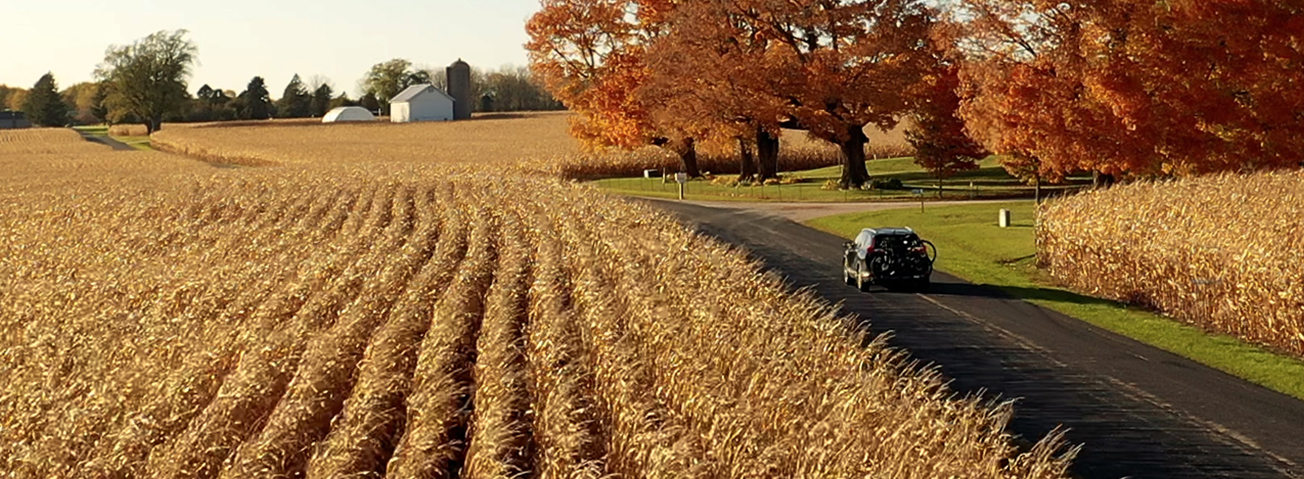
Off-Farm Income a Major Component of Total Income for Most Farm Households in 2019
- by Anil K. Giri, Dipak Subedi, Jessica E. Todd, Carrie Litkowski and Christine Whitt
- 9/7/2021
Off-farm income—such as pensions, investment income, or wages and salary from an off-farm job—is an important source of total income for U.S. farm households. In 2019, 96 percent of farm households derived some income from off-farm sources. On average, off-farm income contributed 82 percent of total income, or $101,638, for all family farms in 2019.
Smaller farms tend to rely more on off-farm income than larger farms. On average, small family farms, those with an annual gross cash farm income (GCFI) under $350,000, derived more than half of their total household income from off-farm income in 2019. By comparison, on average, very large farms, those with a GCFI of $5 million or more, earned 7 percent of their total income from off-farm sources that year. However, those are averages, and some households operating small farms rely primarily on farm income, while some households operating larger farms rely on income from off-farm sources.
Off-farm income can be broadly classified into earned and unearned. Earned income sources are those that require a household member to allocate labor or time to the activity. These sources include nonfarm business income and off-farm employment of the operator and other members of the household. On average, earned income made up 72 percent of total off-farm income (61 percent from wages and salaries and 11 percent from nonfarm businesses) in 2019. In contrast, unearned income sources are passive or transfer income, such as from interest, dividends, private pensions, Social Security payments, veterans’ benefits, and payments from other public programs. These sources accounted for 29 percent of off-farm income in 2019: 19 percent from transfers, 6 percent from miscellaneous sources, and 4 percent from interest and dividends (Because of rounding, numbers may not add up to 100).
For most farm household types, earned income made up the majority of off-farm income, except for retirement farms (where the principal operator reports being retired from farming) and low-sales family farms (where the GCFI is less than $150,000). For these two farm types, earned income comprised 49 percent of off-farm income in 2019. Not surprisingly, off-farm occupation farms (where farming is not the main occupation of the principal operator) had the highest share of off-farm income from earned sources at 84 percent in 2019.
|
Farm type |
Average total income ($) | Farming income | Average income from off-farm sources ($) | |||
|---|---|---|---|---|---|---|
| Average income from farming ($) | Percent of households with negative farm income | Earned | Unearned | Total | ||
| Small family farms | ||||||
| Retirement farms | 77,948 | 11,467 | 40.9 | 32,679 | 33,802 | 66,481 |
| Off-farm occupation farms | 153,185 | 855 | 58.2 | 127,778 | 24,553 | 152,330 |
| Farming-occupation farms | ||||||
| Low sales | 64,055 | -1,427 | 50.9 | 31,848 | 33,634 | 65,482 |
| Moderate sales | 98,305 | 42,170 | 24.1 | 33,158 | 22,976 | 56,135 |
| Midsize family farms | 169,831 | 110,512 | 16.9 | 38,901 | 20,418 | 59,319 |
| Large-scale family farms | ||||||
| Large | 415,525 | 350,839 | 15.0 | 39,420 | 25,266 | 64,686 |
| Very large | 1,370,225 | 1,269,171 | 9.3 | 68,443 | 32,611 | 101,053 |
| All family farms | 123,368 | 21,730 | 48.6 | 73,320 | 8,318 | 101,638 |
|
Notes: Operator household income is not estimated for nonfamily farms. Small family farms are those that have annual gross cash farm income (GCFI) of less than $350,000 and can be further divided into 4 groups: retirement farms, whose principal operators report they are retired, although they continue to farm on a small scale; off-farm occupation farms, whose principal operators report a primary occupation other than farming; and two groups of farming-occupation farms (where the principal operators report farming as their primary occupation): low-sales farms, which have GCFI less than $150,000, and moderate-sales farms, which have GCFI between $150,000 and $349,999. Midsize family farms are those that have GCFI between $350,000 and $999,999. Large-scale family farms are those that have annual gross cash farm income of $1 million or more and are broken out into two groups: large farms, with GCFI between $1 million and $4,999,999 and very large farms, with GCFI of $5 million or more. |
||||||
This article is drawn from:
- Farms and Farm Households. (n.d.). U.S. Department of Agriculture, Economic Research Service.
- Whitt, C., Todd, J.E. & MacDonald, J.M. (2020). America's Diverse Family Farms: 2020 Edition. U.S. Department of Agriculture, Economic Research Service. EIB-220.
You may also like:
- Whitt, C. & Todd, J.E. (2020, March 2). Family Farm Households Reap Benefits in Working Off the Farm. Amber Waves, U.S. Department of Agriculture, Economic Research Service.
- ARMS Farm Financial and Crop Production Practices. (n.d.). U.S. Department of Agriculture, Economic Research Service.
- Key, N. (2019, October 22). Larger Farms and Younger Farmers Are More Vulnerable to Financial Stress. Amber Waves, U.S. Department of Agriculture, Economic Research Service.
- Key, N. (2020, February 3). Beginning Farm Operators and Spouses More Likely To Work Off the Farm Than Established Counterparts. Amber Waves, U.S. Department of Agriculture, Economic Research Service.
- Farm Household Well-being. (n.d.). U.S. Department of Agriculture, Economic Research Service.
- Farm Household Income and Characteristics. (n.d.). U.S. Department of Agriculture, Economic Research Service.
- Lyons, G. (2019). Financial Conditions in the U.S. Agricultural Sector: Historical Comparisons. U.S. Department of Agriculture, Economic Research Service. EIB-211.

